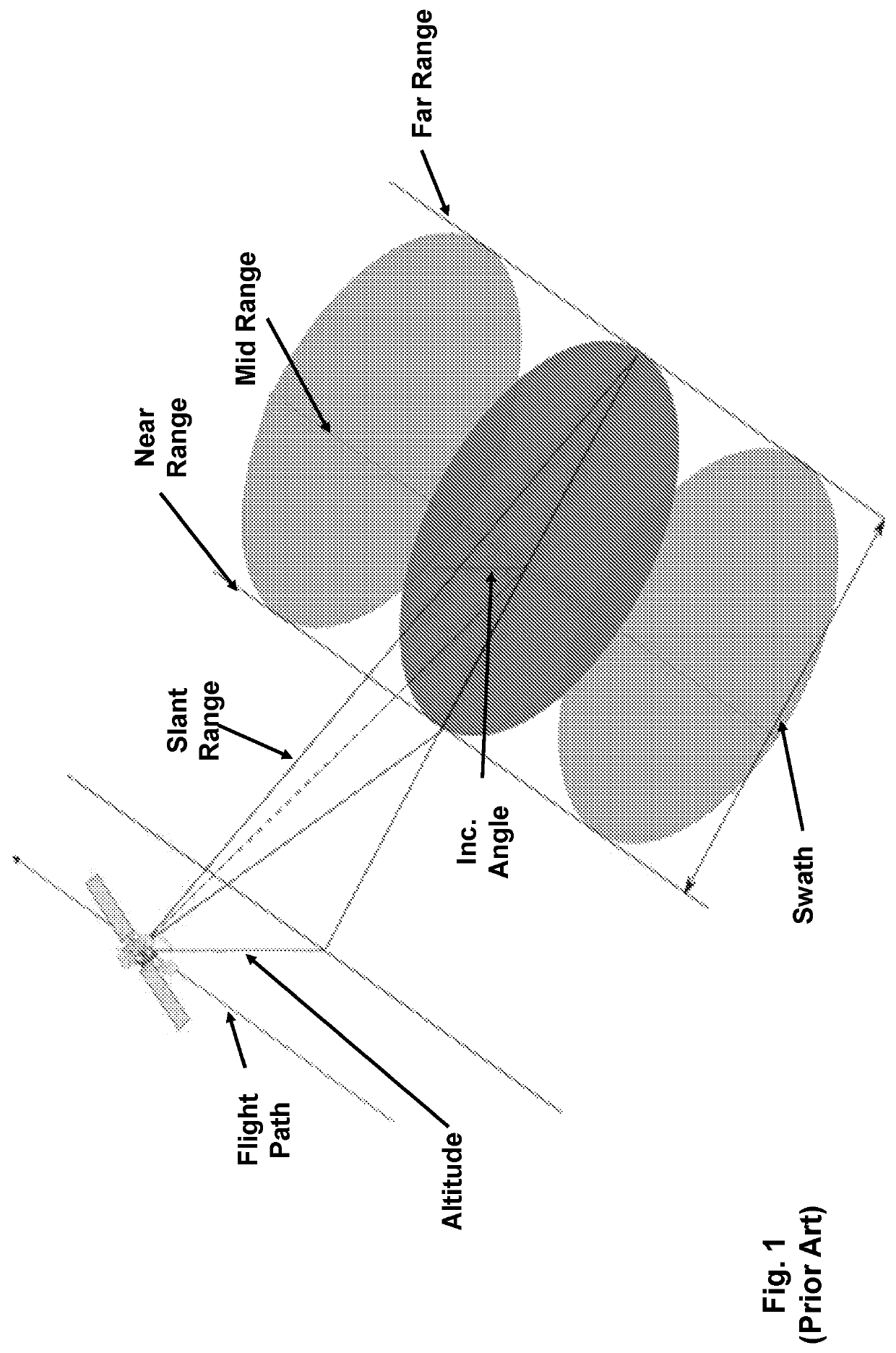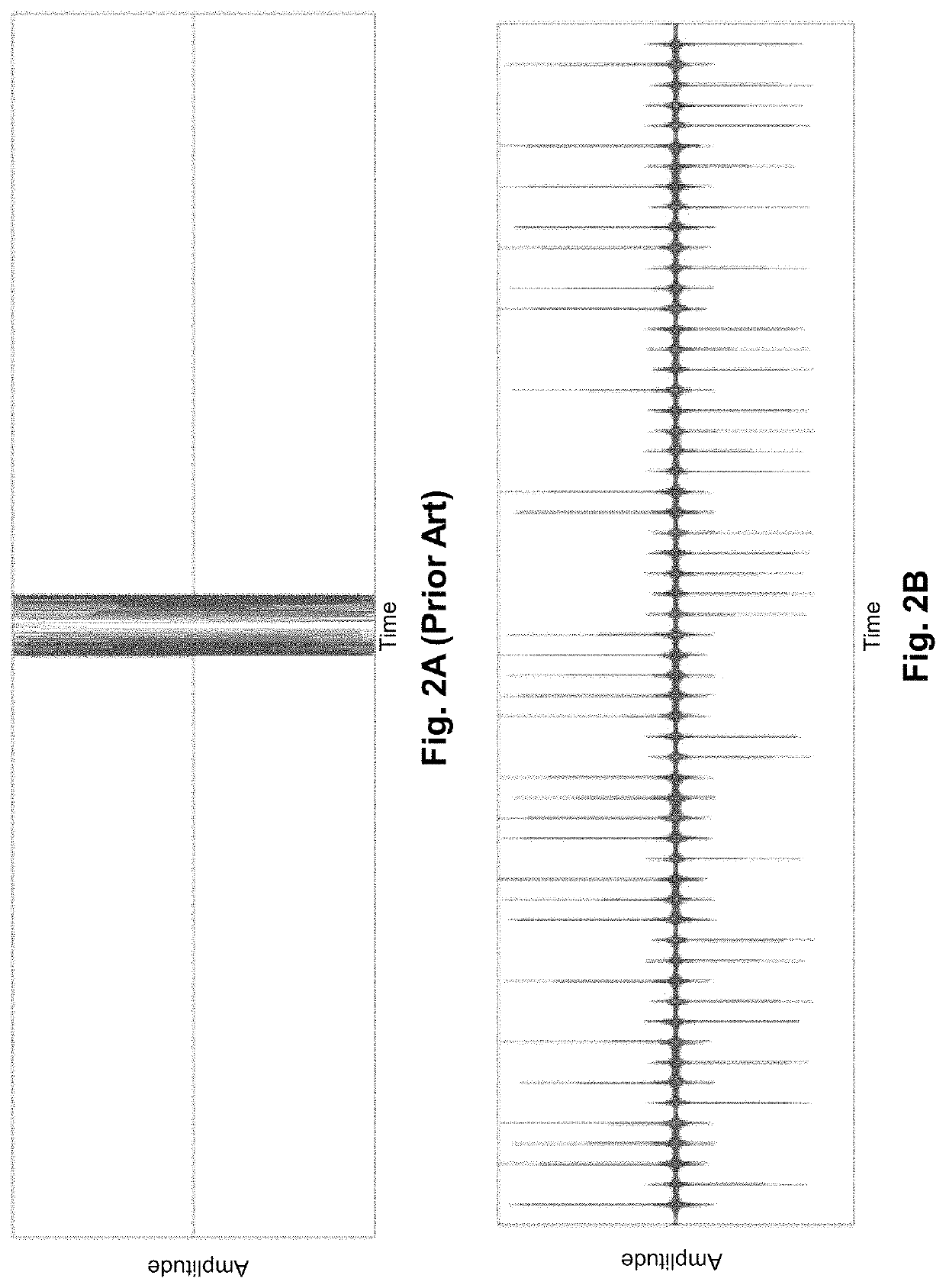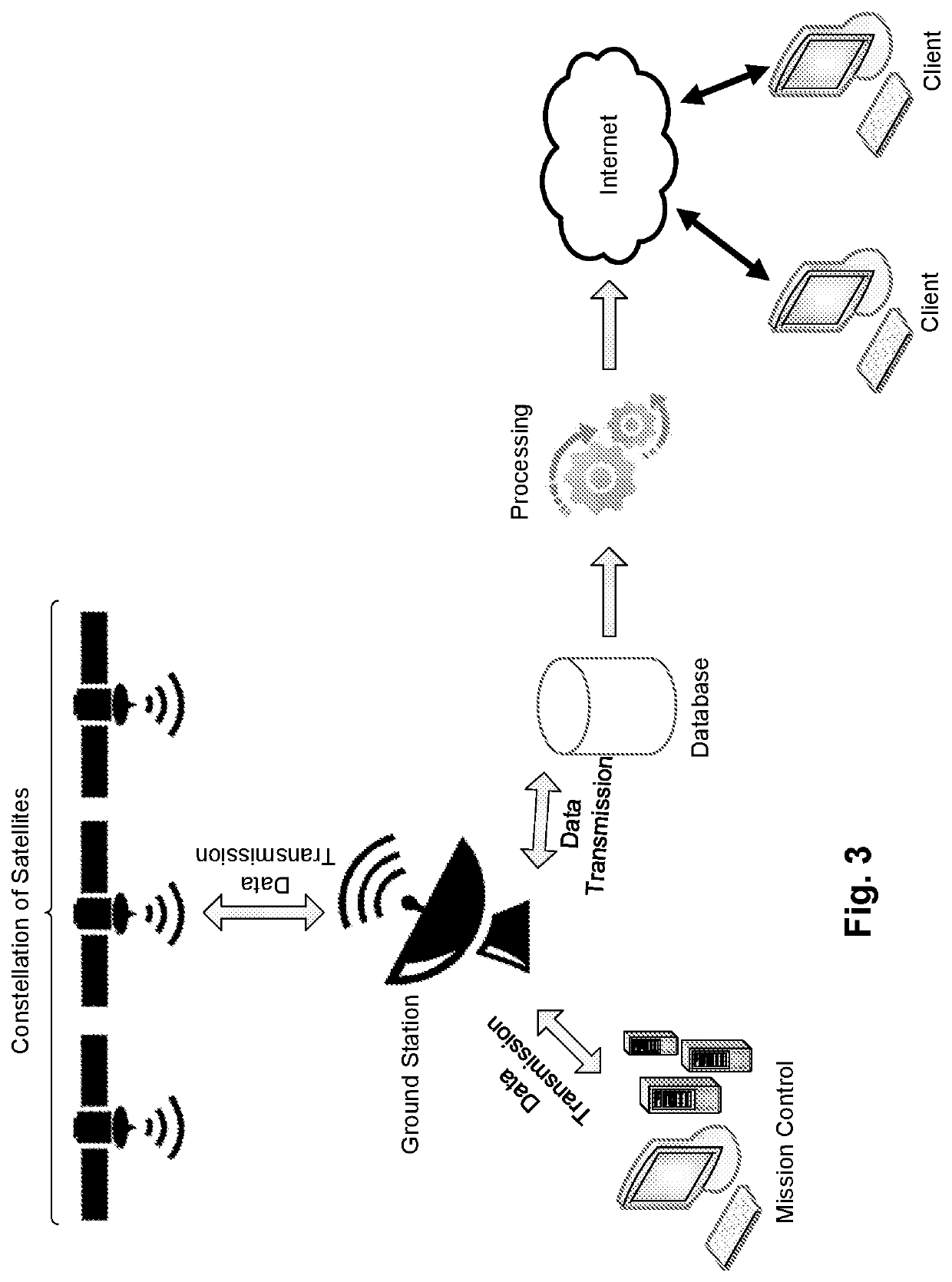Systems and methods for performing synthetic aperture radar imaging using superchirps
a radar imaging and synthetic aperture technology, applied in the direction of reradiation, instruments, measurement devices, etc., can solve the problems of ambiguity in the range (cross-track) and inability to achieve the full range of the radar, and the doppler bandwidth will be under-resolved, and the azimuth (along-track) aliasing and ambiguity is not easy to solv
- Summary
- Abstract
- Description
- Claims
- Application Information
AI Technical Summary
Benefits of technology
Problems solved by technology
Method used
Image
Examples
Embodiment Construction
[0037]Turning now to the drawings, synthetic aperture radar (SAR) imaging systems that transmit repeated waveforms based upon pseudonoise sequences in accordance with various embodiments of the invention are illustrated. The waveforms generated by convolving pseudonoise sequences with any of a variety of kernels can be referred to as superchirps. A benefit of superchirps is that backscattered superchirp reflections are amenable to channelized matched filtering, which means that the sampled received signal can be separated into a sufficient number of channels so that a channelized pulse repetition rate can be achieved that is higher than the transmitted pulse repetition rate. In this way, the use of superchirps enables the construction of a transmitter that can avoid aliasing at pulse repetition rates that are below the Nyquist rate.
[0038]In addition to performance gains through channelized matched filtering, SAR systems that utilize superchirps can achieve transmitter and receiver i...
PUM
 Login to View More
Login to View More Abstract
Description
Claims
Application Information
 Login to View More
Login to View More - R&D
- Intellectual Property
- Life Sciences
- Materials
- Tech Scout
- Unparalleled Data Quality
- Higher Quality Content
- 60% Fewer Hallucinations
Browse by: Latest US Patents, China's latest patents, Technical Efficacy Thesaurus, Application Domain, Technology Topic, Popular Technical Reports.
© 2025 PatSnap. All rights reserved.Legal|Privacy policy|Modern Slavery Act Transparency Statement|Sitemap|About US| Contact US: help@patsnap.com



